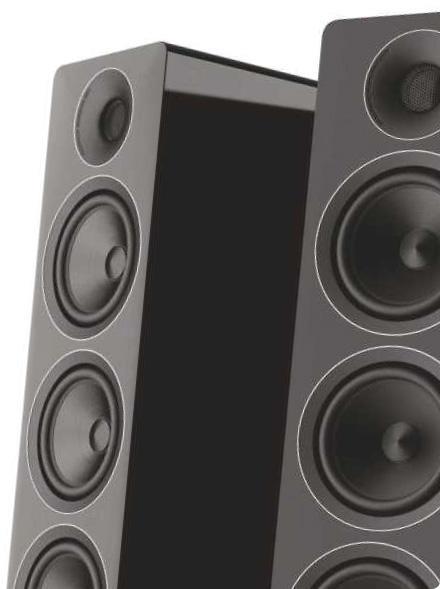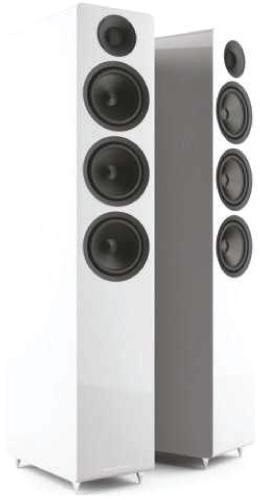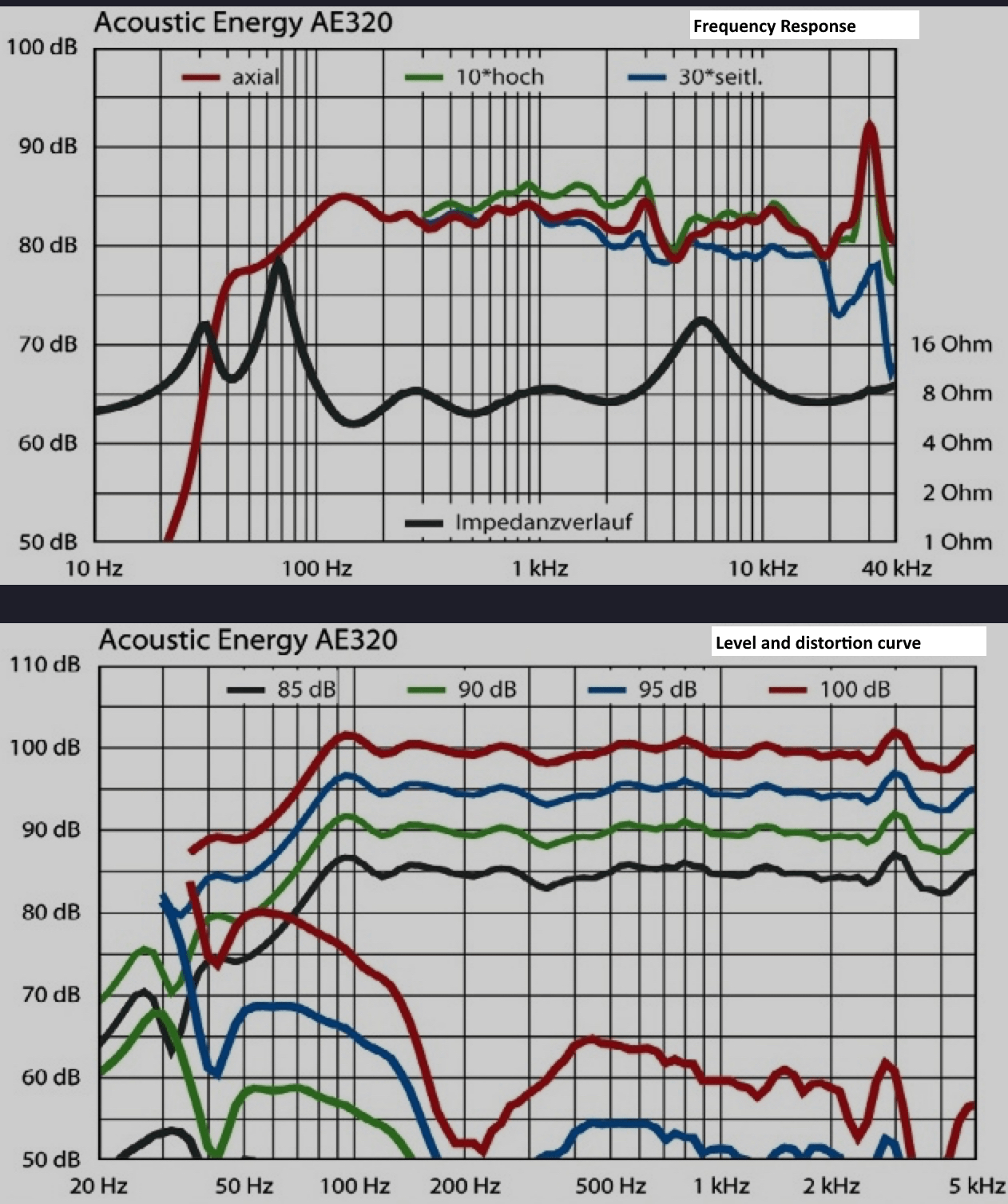Acoustic Energy AE320 Review
Acoustic Energy: The brand name itself is a claim and a promise. Power is essential. The exceptionally slim Acoustic Energy AE320 takes off like a Harley Davidson Fat Boy – classic in form, yet powerful in performance. Tested at 2000 euros per pair.

Motorcycles from Milwaukee captivate many enthusiasts with their charm. The large models feature classic V2 engines with 117 cubic inches of displacement, equating to 1.92 liters! According to Plato, an archetype is an “original form” – a thing that stands as a magical classic for a design, much like a robust Harley. The AE320 fits this definition perfectly as the archetype of a modern floor-standing speaker. It doesn’t need to be large and bulky. Instead, it’s slim and powerful, embodying these values flawlessly. Standing at just one meter tall, it isn’t particularly large but adheres to all the rules of a milestone product.
Design and Build
Removing the front panel reveals a classic design: a 28mm aluminum dome tweeter housed in a waveguide, with three identical 13cm drivers featuring ceramic/aluminum diaphragms below it. The lower drivers handle the bass, the upper 13cm driver takes over the midrange up to 3.4 kHz.
Everything is precisely defined, with no room for interpretation or magic spells. This speaker stands as the beloved archetype of all.

Is it boring, then? Absolutely not. British engineers have created an ideal that is surprisingly affordable at 2000 euros per pair. Nothing prevents us from recommending this purchase. It’s immaculate and powerful, with an unmatched cabinet finish available in high-gloss black and white, or a walnut veneer – the aesthetically best choice. It’s truly elegant. The four spikes at the base, another archetypal feature, look fantastic in our listening room and would likely do so in living rooms worldwide. The appropriate amplifier doesn’t need to be monstrous; the AE320 operates efficiently. A mid-range tube amplifier would also be suitable.
Performance
The AE320 can define the space and the sonic experience even at low volumes. For instance, in Franz Liszt’s “Les Préludes,” conducted by Herbert von Karajan, the initial pizzicato is barely audible before a wave of dynamics builds up to the famous theme. The AE320 conveys this dynamic power beautifully, balancing comfort and analysis. The drivers work in perfect harmony, providing clear and powerful sound without sacrificing analytical precision. Even at 2000 euros, it feels like a great value.
Does it handle fine details? It’s challenging. Playing Beethoven’s “Great Fugue” by the Juilliard String Quartet, I want both the fury and the delicate tones. The AE320 delivers both but lacks the finest nuances. It’s clear that this speaker is tuned for pop and rock. Playing “Bat Out of Hell” by Meat Loaf, the AE320 demonstrates its power, with electric guitars screaming from left and right. The AE320 showcases its strength, even with its narrow 17.5 cm front. The bass isn’t ultra-deep but remains precise. This legendary album sounds best on the AE320, bringing the demanding dynamics to life.

LAB RESULTS
Overall, the AE320 exhibits a balanced frequency response with broad high-frequency dispersion, uncritical resonance at 30 kHz, but early bass roll-off (-3/-6 dB: 71/42 Hz). The midrange driver shows some resonance at 3 kHz, visible in the frequency response and waterfall plot (not shown). The crossover to the tweeter at 3.8 kHz is smooth. The distortion is minimal, and the AE320 is not picky about amplifiers, with a nominal impedance of 6 ohms and an efficiency of 83 dB (2V/1m). The maximum sound pressure level of 104 dB SPL is achieved with 100 W (6 ohms).

Tech Specs
| Product | Acoustic Energy AE320 |
| Origin | UK/China |
| Type | 3-way floor standing loudspeaker |
| Weight | 26 kg |
| Dimensions (WxHxD) | 175 x 1,000 x 320 mm |
| Features | – 1x 28mm dome tweeter |
| – 1x 130mm midrange driver | |
| – 2x 130mm mid/bass drivers | |
| – Quoted sensitivity: 90dB/1W/1m (8 ohm) | |
| Distributor | Acoustic Energy |
| Telephone | 01285 654432 |
| Website | acoustic-energy.co.uk |
HOW IT COMPARES
Bowers & Wilkins’ 603 S2 Anniversary Edition is a fascinating contrast. It’s a more ‘grown-up’ sounding speaker in that it’s more discreet, controlled, measured, and refined. It does everything well and nothing badly.
OUR VERDICT
The Acoustic Energy AE320 is a remarkable speaker that caters to various preferences. It handles classical music well, though it may lack the final degree of fine dynamics. It excels with rock, filling the room with sound from a surprisingly slim form. The harmony of the drivers is impressive, making for a cohesive sound. Everything fits – the design, the performance, and the price. We strongly recommend it.
Acoustic Energy AE320 - Slim Fit Floorstanding Speaker Review
FOR MORE INFO ⬇️ Acoustic Energy was founded in London, England in 1987 and since 1995 has been based in the heart of ...





